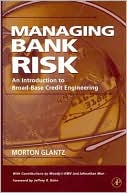
Remortgaging is a process that allows homeowners to consolidate debt or lower payments by changing lenders. In this process, a new lender with more amenable terms buys the mortgage from the original lender, so that the homeowner can now pay off the debt with a more flexible repayment schedule. It is often possible to remortgage with bad credit, though it may initially cost more and take some serious research on the part of the homeowner. Deciding to remortgage with bad credit can actually help rebuild credit scores over time.
In order to remortgage with bad credit, it is first important to figure out an ideal payment plan for the mortgage. If a person has 15 years left on his mortgage and can no longer afford his $2000 US Dollars (USD) per month in mortgage payments, he may be able to remortgage with another company for a 20 or 25 year term. While this might mean that he would pay more in interest over time, it could potentially reduce monthly payments to a manageable level. In some cases, a remortgage with bad credit can be the difference between keeping a house and going into foreclosure.
Where credit comes to bear in the remortgage process is the availability of interest rates and loan terms. A person with high credit scores may be able to secure much lower interest rates, while the choices of a person that is trying to remortgage with bad credit may be more limited. Nevertheless, many financial institutions specialize in providing remortgages to people with bad credit or a history of bankruptcy, but experts recommend shopping around to find the best possible rates.
In order to remortgage with bad credit, a homeowner will likely need to agree to strict repayment terms with the new lender. A bad credit history intimates that the person is a higher risk for lenders, so the new mortgage will have built in safeguards to protect the profit of the lender. Some of the extra costs that may be involved in remortgaging include a higher initial processing fee, high late payment penalties, and other fees not disclosed in the initial rate of the remortgage. It is important to read all fine print on remortgaging information to ensure that the terms of the new loan are acceptable.
An important step that can be built into remortgaging is the release of equity in the home or property. As a person pays his mortgage, equity in the house is slowly built up. A person facing large debts may technically have the assets to get out of trouble, but since they are tied up in housing equity, the assets are not liquid. A remortgage can include an option to borrow the equity already owned from the lender, hence creating a lump sum to pay off student loans, credit cards, and other debts. While this does mean that equity is lost, if the interest rate on the remortgage is lower than that on other debts, a person may be able to pay off debt faster by consolidating it into the remortgage.
Friday, July 15, 2011
How Do I Remortgage With Bad Credit?
Subscribe to:
Post Comments (Atom)












3 comments:
Thank you for sharing your knowledge, you helped me a lot..
מחשבון משכנתא
One of the best ways to get a remortgage is to improve your credit score (that is if you have a bad credit score)cpe for cpas
If you try to apply for a financial loan in any bank with bad credit remortgages, the result will always be the same. Your application for the financial loan will be denied. There will be no way for you to get the money you need. You will not be able to satisfy your needs. You will be put in a worse situation. Lastly, you will not be able to get back on your feet. In these cases, there are lots of individuals and families that are getting desperate bad credit remortgages
Post a Comment